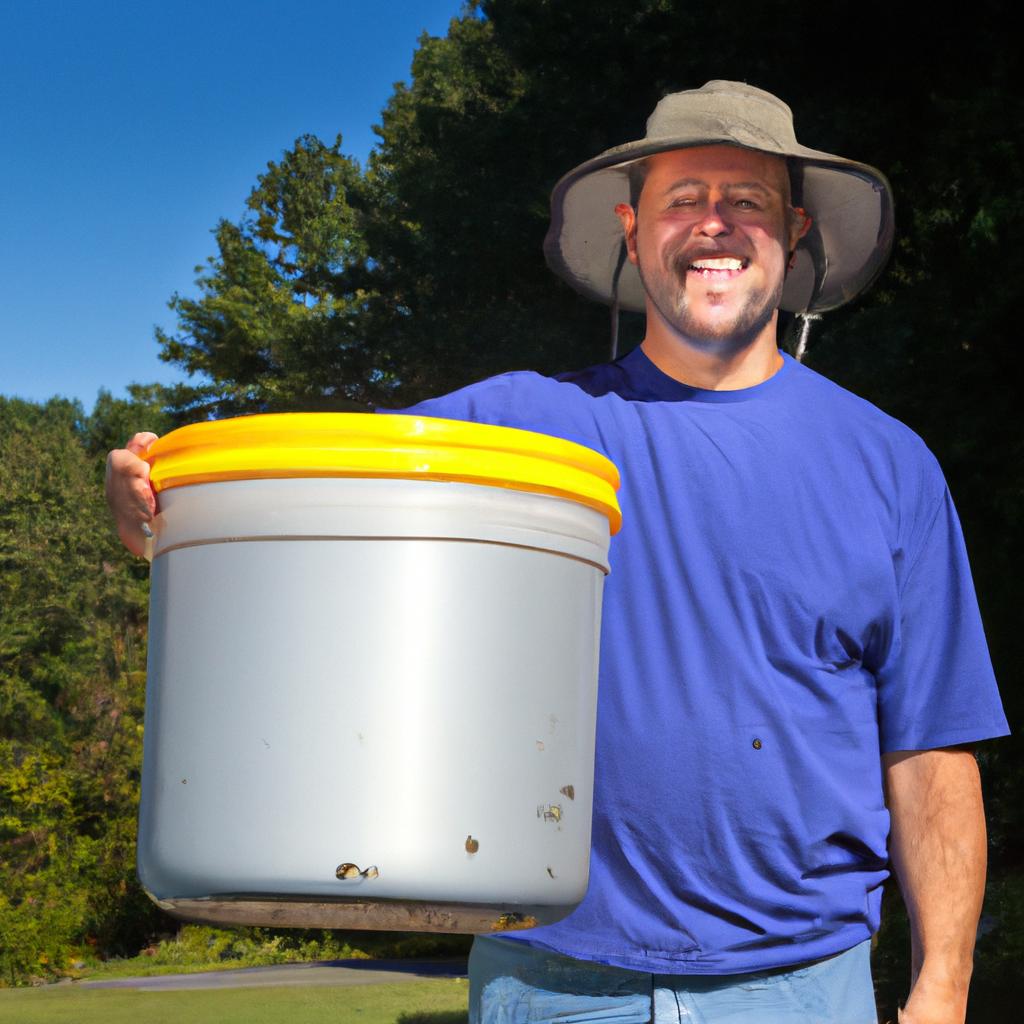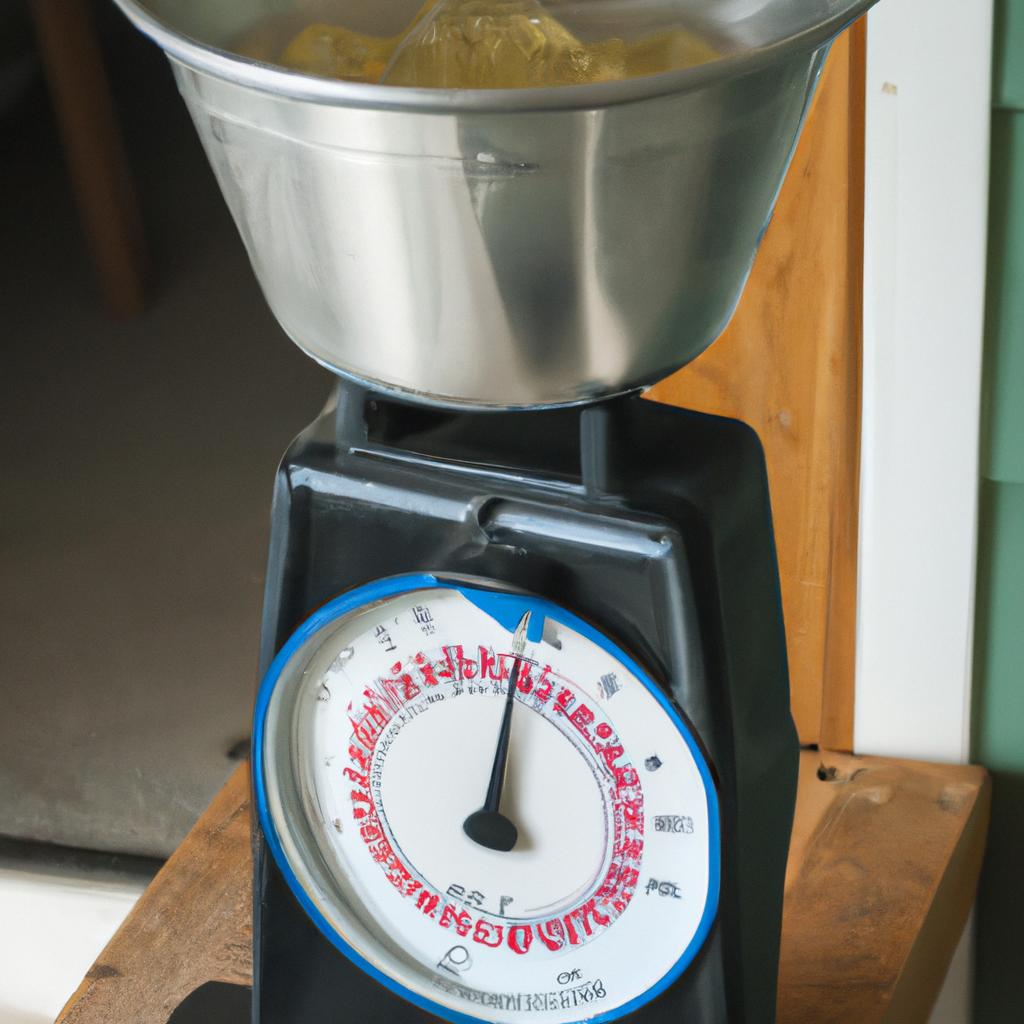Are you a beekeeper wondering how much honey you can extract from your beehives? One of the most common questions asked is, “How many pounds of honey are in a 5-gallon bucket?” Understanding how to measure honey is essential for beekeepers, and it’s crucial to know how much honey you can extract from a 5-gallon bucket.
Before we can calculate how many pounds of honey are in a 5-gallon bucket, it’s essential to understand honey measurements. Honey is typically measured in weight, volume, or liquid ounces. The most common measurement used in beekeeping is weight, which is measured in pounds or kilograms.
To give you an idea of how honey measurements work, one gallon of honey weighs approximately 12 pounds. Therefore, a 5-gallon bucket of honey would weigh around 60 pounds. However, it’s important to note that the weight of honey can vary depending on several factors, such as the type of honey and water content.
When it comes to honey measurements, beekeepers need to be precise. Inaccurate measurements can lead to underestimating or overestimating the amount of honey produced by the beehives. This can impact the profitability of the beekeeping business. Therefore, it’s crucial to have a clear understanding of honey measurements and how to convert between different measurements.
As a beekeeper, it’s essential to keep track of the honey produced by your beehives. This information can help you monitor the health of your beehives, predict future yields, and make informed business decisions. Understanding honey measurements is the first step towards achieving these objectives.
Next, we will explore honey density and weight and how they impact the amount of honey that can fit in a 5-gallon bucket.
Honey Density and Weight

Honey density and weight are also essential factors to consider when measuring honey. Honey density refers to the weight of honey per unit volume. The density of honey can vary depending on several factors, such as the type of honey, the temperature, and the water content.
The weight of honey, on the other hand, refers to the actual weight of honey in pounds or kilograms. The weight of honey can be affected by factors such as the water content, temperature, and the type of honey.
The honey density and weight affect the amount of honey that can fit in a 5-gallon bucket. For instance, honey that has a higher density will weigh more per unit volume than honey with a lower density. Therefore, less honey can fit in a 5-gallon bucket of honey with higher density compared to honey with lower density but the same volume.
How Much Honey Can Fit in a 5 Gallon Bucket

The amount of honey that can fit in a 5-gallon bucket varies depending on several factors, such as the density and weight of the honey, the temperature, and the type of honey. However, based on estimates, a 5-gallon bucket of honey can hold about 60 pounds of honey.
To calculate the maximum amount of honey that can fit in a 5-gallon bucket, you need to consider the density of the honey and the weight of the bucket. The weight of the bucket is typically around 2 to 3 pounds, depending on the material used. Therefore, to calculate the maximum amount of honey that can fit in a 5-gallon bucket, you need to subtract the weight of the bucket from the total weight limit, which is approximately 63 pounds.
Factors such as the temperature and the type of honey can affect the amount of honey that can fit in a 5-gallon bucket. For instance, honey that has a higher water content will weigh less than honey with a lower water content. Therefore, more honey can fit in a 5-gallon bucket of honey with lower water content compared to honey with higher water content.
In conclusion, understanding honey measurements, density, and weight is crucial for beekeepers. By understanding these factors, beekeepers can accurately measure the amount of honey produced by their beehives, monitor the health of their beehives, and make informed business decisions. A 5-gallon bucket of honey can hold around 60 pounds of honey, but this can vary depending on several factors.
How Many Pounds of Honey in a 5 Gallon Bucket
Now that we understand honey measurements, density, and weight, let’s calculate how many pounds of honey are in a 5-gallon bucket. As mentioned earlier, honey weighs approximately 12 pounds per gallon. Therefore, a 5-gallon bucket of honey weighs around 60 pounds.
However, the actual weight of honey in a 5-gallon bucket can vary depending on several factors. For example, if the honey is raw and unfiltered, it may contain more water, reducing its weight. The type of honey can also affect its weight. Some honey varieties, such as clover honey, are denser than others.
To calculate the exact weight of honey in a 5-gallon bucket, you can weigh the bucket before and after filling it with honey. Subtracting the weight of the empty bucket from the weight of the filled bucket will give you the weight of the honey. This method ensures accurate measurement and eliminates the need for estimation.
Conclusion
In conclusion, understanding honey measurements is essential for beekeepers and other industries that involve honey production. We’ve learned that honey can be measured in weight, volume, or liquid ounces, with weight being the most common measurement used in beekeeping.
We’ve also explored honey density and weight and how they impact the amount of honey that can fit in a 5-gallon bucket. Factors such as water content and honey variety can affect the weight of honey in a 5-gallon bucket, making it crucial to weigh the honey accurately.
Accurate honey measurements are vital for beekeepers to monitor the health of their beehives, predict future yields, and make informed business decisions. Inaccurate measurements can lead to underestimating or overestimating the amount of honey produced, impacting the profitability of the beekeeping business.
As a beekeeper, it’s essential to understand honey measurements, density, and weight and use accurate measurement methods to ensure the success of your beekeeping business. BeeKeepinglove.com hopes this article has provided valuable information that will help you achieve your beekeeping goals.
